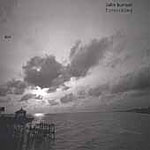Home » Jazz Articles » Album Review » John Surman: Coruscating
John Surman: Coruscating
Born in 1944, Surman, perhaps because of his separation from the American jazz mainstream, has develops a grace on his instrument that carries Gerry Mulligan's style a step further. By investigating electronics and British folk tradition, as well as relying on the jazz and classical idioms, Surman has crafted his own lightness and upper-register technique on the baritone sax that remains unlike any other performer's. With a long history of creative projects on the Continent with well-known musicians there, such as Barre Phillips and Albert Mangelsdorff, Surman continues to find new occasions for musical exploration.
While Surman isn't mentioned in the recent JazzTimes article about the innovations of European jazz, he falls within the article's contention that Europeans aren't bound to the expectations and sameness of much of American jazz. Manfred Eicher's ECM label remains the leading exponent of that leadership of creative jazz developments into the millennium.
On Coruscating, Surman teams up with his friend and bassist Chris Laurence for duo interaction complemented by a string quartet. Instead of using a previously formed quartet, Surman assembled one consisting of string musicians he admires.
The effect is one that blends classical references with often stunning improvisational dialogue, such as the surprisingly rich set-up of dark moods on "An Illusive Shadow" as Surman's bass clarinet provokes Laurence's double bass into a response before the strings angularly join in.
Surman's baritone sax work on "Stone Flower," in tribute to Harry Carney, may refer to his inspiration. However, Surman has elevated the sonority of the instrument to an almost ethereal level, creating a float amid intermittent bursts of melodic thought.
"For The Moment," not to mention "At Dusk," emerges slowly and organically through stringed expression of the theme before Surman affirms on saxophone the suggestions of clear-cut melody, confirming the paraphrase of Eicher's statement that "the only more beautiful sound than ECM's is silence."
As a signal of its support of a major artist, ECM has re-released five of Surman's albums from the early 1980's to 1994. Now that American listeners are paying more attention to the jazz developments overseas, it makes sense to check out the leading contemporary innovator, along with Bluiett, of the baritone sax, as well as Surman's work on the other instruments he performs.
Track Listing
1) At Dusk 2) Dark Corners 3) Stone Flower 4) Moonless Midnight 5) Winding Passages 6) An Illusive Shadow 7) Crystal Walls 8) For The moment
Personnel
John Surman
saxophoneJohn Surman; soprano and baritone saxophones, bass and contrabass clarinets: Chris Laurence; double-bass: Rita Manning; violin: Keith Pascoe; violin: Bill Hawkes; viola: Nick Cooper; cello
Album information
Title: Coruscating | Year Released: 2000 | Record Label: ECM Records
< Previous
Lemme Tell Ya 'Bout Desmond
Comments
Tags
Concerts
For the Love of Jazz
 All About Jazz has been a pillar of jazz since 1995, championing it as an art form and, more importantly, supporting the musicians who create it. Our enduring commitment has made "AAJ" one of the most culturally important websites of its kind, read by hundreds of thousands of fans, musicians and industry figures every month.
All About Jazz has been a pillar of jazz since 1995, championing it as an art form and, more importantly, supporting the musicians who create it. Our enduring commitment has made "AAJ" one of the most culturally important websites of its kind, read by hundreds of thousands of fans, musicians and industry figures every month.




















